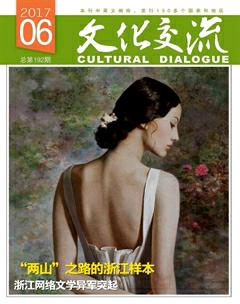半山立夏习俗
傅淑青
人類非遗代表作“二十四节气”之三
二十四节气是中国古人智慧的结晶,专门用于农事指导而订立的历法。
在二十四节气的文化展衍部分中,立夏习俗的主要传承地——杭州市拱墅区半山社区,参与了二十四节气列入人类非遗代表作的联合申报。
半山地处杭州北郊,文化积淀深厚。历史上,立夏习俗本来就多在东南各省流行,杭州半山一带保存得较为完整,也很有代表性,笔者对此早有耳闻。最近,在拱墅区非遗保护中心副主任文闻的陪同下,笔者采访了当地的几位老人,感受独特魅力。
家住半山街道石塘社区的杨梅芬大妈介绍,半山一带的人普遍把立夏当作迈入夏天的标志,之后,温度节节攀升,草木庄稼欣欣向荣,农耕也更加繁忙。
半山的居民如今普遍不再下地耕作,但他们仍旧把立夏当成一年中为数不多的重要节日来过。杨大妈说,在每年立夏的三四天前,节日的气氛就开始浓郁,尤其对“立夏日,吃补食”这个说法,居民到现在还信奉无比。过立夏节,其中之一是吃乌米饭。据说吃了乌米饭,小孩不会遭蚊虫叮咬,大人也不容易中暑生病。
立夏快到,杨大妈提前好几天准备好做乌米饭的主要材料——乌树叶。半山街道的家庭主妇都和她一样,三三两两结伴去山上采摘乌树叶,拿回家洗净切碎,浸泡在40度左右的温水里,待到乌树叶出油后,把糯米浸泡进去12小时左右,再用小火蒸熟。立夏当日,这是杨大妈一家人必吃的,虽然做起来费时费力,“但世代相传的习俗不好随便掼掉的”。
除了吃乌米饭,吃野米饭也是大家喜欢的。八十高龄的半山居民张德民回忆,从他小时候记事起,就有立夏前后吃野米饭的风俗。
春末夏初,蚕豆和野笋是时令之蔬。旧时,人们把采摘来的蚕豆和挖掘来的野笋混在粮食里,在田间地头随意支一个灶,烧成野米饭当美味充饥。后来,这一习俗被保留,演变为立夏的主要传统习俗。烧野米饭是最受孩子欢迎的。因为在这天,他们可以假借摘蚕豆和挖鲜笋的名义到处疯玩,大人不会责罚。
半山一带的居民过立夏,还有一个习俗——称人。据说,人在立夏称过身体重量,可以防止疰夏。以前称人,大都称十来岁以下的孩子,祈愿他们平安健康过夏天。张大爷说,称人有非常美好的寓意:会给人们带来福气。是啊,不管男女老少,谁不希望带点福气回家?
听罢杨大妈和张大爷的介绍,笔者甚是惊讶,几千年的农耕社会早已离我们渐行渐远,为何半山立夏习俗如此完美地传承保留下来?文主任给出了解释,她说皋亭文化研究会是传承半山立夏习俗的功臣之一。
在文主任的介绍下,笔者走访了皋亭文化研究会会长、半山立夏习俗传承人倪爱仁先生。倪先生告诉笔者,皋亭文化研究会为挖掘、研究、开发、利用地方文化而工作。为了让立夏习俗在民间得以弘扬传承,2006年,该研究会组织活动,烧了百余斤乌米饭,在半山娘娘庙前免费分发。倪先生至今对当时的场景记忆犹新。他说,场面十分热烈,乌米饭在极短的时间里发放完毕,省内外有18家媒体对这一活动做过深度报道。
倪先生说,民众对吃乌米饭这一习俗的喜爱程度,激发了皋亭文化研究会继续做下去的信心。“民众都会在立夏日赶来半山,我们烧两三千斤乌米饭都不够,去年用掉了近4000斤糯米,这便可测算出参与立夏习俗活动人数。”
笔者询问资金来自何处,倪先生回答,早先是参加活动的义工自己募捐,后来政府给予了一定的支持。令倪先生特别感动的是,义工都对立夏习俗感兴趣,“他们很朴实地说,我们的想法很简单,就是不想让老祖宗留下来的民俗断掉”。
除了这股民间自发力量,政府部门也越来越重视。从2008年起,拱墅区多个部门对立夏习俗进行了多次专题调研,建立了一个完整的文字、图片和影像资料体系。2012年,拱墅区政府将半山立夏习俗活动发展为半山立夏节,至今已举办了五届。期间,半山立夏习俗先后被列入杭州市、浙江省非物质文化遗产名录,这些都对二十四节气申遗起到了相当作用。
举办立夏节,形式和内容自然越来越丰富,民众可以体验农业耕作、可以感受“郊野迎夏”传统、可以参与体育嘉年华活动,也可以加入文艺雅集,真正成为群众性的民俗活动大聚会。
半山立夏节不仅吸引了杭州市民,也使外地游客产生莫大的兴趣。在上海一所大学工作的陈正权先生是一位民俗文化的研究者,他觉得立夏习俗在江浙一带,只有半山的节会是最接地气、最纯正的民俗活动。文主任介绍,像陈先生这样慕名而来的专家学者,每年都有许多,他们来现场调研半山立夏习俗。
随着二十四节气的申遗成功,半山立夏习俗在省内外乃至全球获得了相当的知名度和美誉度。拱墅区非遗保护中心正集中精力对立夏习俗进行多方位的挖掘研究,开始建立传承人和知情人的口述访谈调查记录,接下来还准备着手进校园、进社区,让学生和市民真正了解老祖宗留下来的宝贵财富。
笔者实地踏看了半山森林公园娘娘庙,这里,立夏文化园已经破土动工,园内500株乌米树苗已经栽下,竹子也将陆续培植;拱墅立夏文化展示厅的建设也被提上了议程,街道社区、拱墅非遗保护中心以及皋亭文化研究会等正在收集农耕用品和立夏习俗的相关资料。
文主任说:“我们希望半山立夏习俗能在民间扎根、传承;希望二十四节气这一人类非遗代表作在全世界得到更广泛的弘扬。”
(本文照片由拱墅区非遗保护中心提供)
Banshan in Hangzhou Honored for “Beginning of Summer” Custom
By Fu Shuqing
November 30, 2016 saw the 24 Solar Terms of China were added to the World Representative List of the Intangible Cultural Heritage of Humanity. Though the tradition, which was formed thousands years ago in China, is no longer very important in various ways as China is taking strides toward modernization, the lifestyle shaped by the tradition still goes on. The solar terms are observed across China in various ways. Zhejiang accounted for four of the ten places chosen to represent the solar terms tradition in the application for the heritage list. Banshan in Hangzhou is chosen to represent the local celebration of the Beginning of Summer. The tradition is well preserved in the region.
The Beginning of Summer usually falls on the tenth day of the fourth month on the lunar calendar or in early May on the Gregorian calendar. It is the seventh solar term of the lunar year and the first solar term of summer. In the farming tradition, people get busy farming as soon as summer begins.
The traditional celebration of the beginning of summer in Banshan is focused on food. Before the big day, housewives go to mountains to pick leaves of a special tree, which are used to make black rice. The leaves are cut to small pieces and then are submerged in the 40-degree lukewarm water for the black tint to melt into the liquid. Then glutinous rice goes into the liquid and stays there for 12 hours. The blackened rice is then steamed. It is said that eating black rice can keep children safe from insect bites and adults from getting heat strokes.
On the day, young girls pick broad beans in farmlands and young boys go to mountains and dig bamboo shoots. Kids go wild and naughty doing the assignment. After they get their harvest, they learn to cook in the open. On the Beginning of Summer day, people get weighed. Traditionally, getting weighed is a sure way to make people aware that they need to eat as properly as possible and keep themselves as healthy as possible in summer.
The tradition is well preserved in Banshan largely because of Gaoting Cultural Studies Association, which was founded in 2002 and is dedicated to the studies of the 24 Chinese solar terms, the first of its kind in the province.
The association is headed by Ni Airen, a native of Banshan. He founded the association with 50 some local enthusiasts. The Beginning of Summer is a key subject upon which the association has spent time studying. Since 2007, the association has distributed the black rice at the Goddess Temple in Banshan on the Beginning of Summer day. The association has funded the event of its own.
The custom is also a high priority on the local government agenda. In 2008, the tradition was inscribed on the Representative List of the Intangible Cultural Heritage at both the municipal and the provincial level. A government research center for intangible cultural heritage did a thorough survey on the tradition and took a complete visual and audio record of the local tradition. The survey documents contributed to the successful designation of the 24 Solar Terms of China as UNESCO heritage.
In 2012, the first Beginning of Summer Festival was held in Banshan Forest Park. Since then, the festival has become very colorful and diversified. Nowadays, the festival hosts quite a few events. Ni Airen, the president of the association, is glad that the tradition is very much alive today. He remembers that only 50 kilo of rise was used the first time he and his colleagues distributed free steamed black rice on the day. In 2016, 2,000 kilo was distributed. The rice consumption well indicates how many people are attracted to the festival.
The festival will be more colorful in the future. A project has kicked off, to build a special park to mark the Beginning of Summer day. Five hundred trees have been planted. The trees would provide tree leaves for people to pick to prepare for the steamed black rice. A garden has been prepared for broad bean to be planted. A work group is studying and evaluating an exhibition site to be built to display the tradition.

